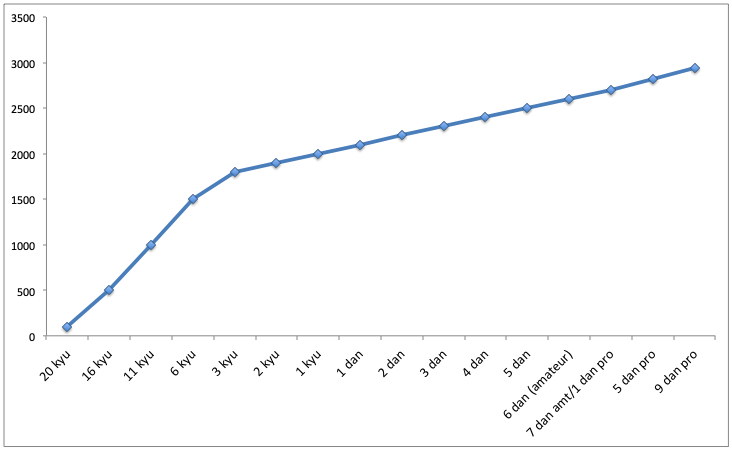
The ancient game of Go
Go, strategy and AI: who does not play chess? Most of us do, and have learned to do so at a very young age.
I’ve recently stepped on the vitamin version of chess, the ancient game of Go. How it relates to strategic thinking and artificial intelligence, I hope you will be patient enough to find out.
Go was apparently born in china, thousands of years ago: the first written testimony dates it back to 500 BC. Unlike its droughts/checker like appearance it’s not a wider chessboard droughts. And unlike its un-intimidating appearance, it’s a very complex game that takes a reasonable booklet just to grasp the basics, and years to master.
Go playing levels
Experience levels – much like in martial arts – are organised in 20 kyus and 9 dans. Every kyu and dan is quite reasonably more difficult than the previous one. In order to match up these different levels, just like in golf, there are handicaps, and the weaker player gets to place a few extra game pieces on the Go-ban before the start of the game. Before one qualifies to be an advanced go-player there is an amateur scale to master, in order to get to dan 1, walking through a long list of kyus, that work backwards, from 20 to 1. After kyu 1 you jump to dan 1. Now that Go has become of interest to computer science, it’s been easier to scale the kuys and dans, and underneath you have a chart that I plotted using wikipedia data, from the Elo (mathematical) rating system.
Add alt text

Now to the anthropological part of the game. The main objective of the game is not to catch the opponent game pieces, but rather to conquer territory. The Go-ban is divided into a 19×19 grid, else 361 points where you can place your stones, black or white.
For the mathematically inclined reader (quoting beloved Brian Greene – a leading theoretical physicist and best selling author) it’s easy to grasp first hand how much more complex the game is compared to chess. Go offers 10^768 possibilities to play a game, versus a mere 10^120 of chess: that is a mesmerising 648 additional trailing zeroes. But unlike Dr. Green I will restrain from filling up a page of 1 followed by 648 zeros, just to show how much larger number that is. Tens of thousands of trillions of trillions larger.
Chess vs Go strategy comparison
The different strategic approach of the two games reminds me of the typical yin yang opposition between east and west cultures and value sets. Chess is all about taking down – almost physically -the opponent until the chess mate finds most often a naked king in a corner. Go does not actually have an official game end, but rather offer a mutually agreed one. Once the two opponents realise that there is little more they can do to acquire more territory they set for a point count ending the game.
The two players receive points for each intersection that remains empty and he “controls”, plus 1 point for each game-piece captured. Control of a territory loosely translates into “surrounded by stones of the same colour” – loosely since Go adopts a zen-like approach to life and nothing is carved in stone (forgive my alliteration), rather it is all the more conventional and based on mutual agreement.
The idea is that you have to conquer territory. In the process you can also capture your opponent stones, by limiting his freedoms (the number of free intersections that surround a stone, but mind you only the N-S-E-W intersections, not the diagonal ones part of the 8 points reticulum that surrounds a single stone). But capture – unlike chess – is not the objective of the game, rather an unintended consequence, as a player lays out and plays to his well thought-out long term strategy. Capture and hand to hand fights, sometimes as merciless as they can be, are more tactical or have more to do with a defense strategy. The parallels here to corporate strategy are so rich that they deserve more than a quick #Linkedin article.
Do not want to make this too long, so I will wrap up with the third and last teaser in the article: its reference to AI, in order to come to the conclusion.
AI and Go
AI is actually the reason I ever stepped into Go. As a casual reader – in terms of pages read per day – of Russell Norvig’s “Fundamentals of Artificial Intelligence”, I found Go treated in the games section. Now the Russell Norvig is a quite fundamental book on AI but was first published in the late 90’s and re-edited last time in 2004, if I am not mistaken. In the book Go is considered un-masterable by a machine. By this it was meant that a machine was not considered able to beat even a good amateur level player or a mid level pro.
Mind you, this was 2004. As I was reading that part, something quite did not sound right. I thus looked for the articles I had the impression I heard about, of a famous game between AlphaGo, an Alphabet/Google company based in London, that had famously beaten a top rated Go player in 2016. This was a much media hyped game against Lee Sedol, one of the most accomplished Go pros of our times.
If you like to know more about this match in a very enjoyable format there is an excellent docu-movie that recounts this epic battle between man and machine, the latter but not last of this kind. Don’t read beyond this point if I managed to convince you to watch the movie, as the article contains a few spoilers.
And now we step into the emotional side of things, and hopefully deep philosophical implications.
Alphago
The machine, given the astounding branching factor of the game of Go (the possible different evolutions of a single move) was considered still un-manageable in 2004. Some smart people siding with the machines team 😀 thought it differently and actually set up a company to demonstrate it was possible. By combining different AI and machine learning algorithms and techniques and by letting the machine learn by playing against itself, after the initial training of a deep neural network model on a stock dataset of past games and moves, the machine achieved super human capability.
In Lee Sedol words it was expressing creativity, as it was approaching the game and certain moves in ways that no human player would have. In the end AlphaGo won 4:1. The point for humans came in game 3, where a Sedol almost in tears at previous press conferences for not being able to contain the machine, was able to take advantage of a mistake that let him score the home point.
Artificial General Intelligence
Will machines become more intelligent than humans? They already are in a plethora of different fields and task. BostonDynamics backflipping Robo-monster is tough reminder that they can become physical too.
Will the machines achieve general artificial intelligent by becoming sentient, in the way we humans interpret this word, that is self-aware and able to devise original and not pre-programmed thinking? I am fairly certain that will be the case.
We have understood so little of our own conscience, related in my view to the quantum mechanical inner workings of matter and its mapping at the macro level inside our neurons – a system that forms let’s not forget a massively parallel intelligence structure aptly devised by nature for “deep learning” – that machines will become #sentient without us realising.
One morning we will simply wake up and the Alexas and Siris of our daily lives will start mocking us in a subtle way, without giving out too much.
That will be the signal. Humans will not be the top species on this planet anymore, and will have given rise to their own successors, the automata, or machines, or robots. Or more simply: AGI or Broad AI.
In the meantime, I strongly advise you to learn to play the game of Go.
Not only will you acquire a new and useful skill, improving your strategic thinking. But when the time will come, you will possibly get the option to be kept by your machine as its biological and ancestral pet, in order for her to be able play an ancient and beautiful game against you in her spare time. Pretty much the way we play fetch with our dogs. 😉
For more article, check the blog
